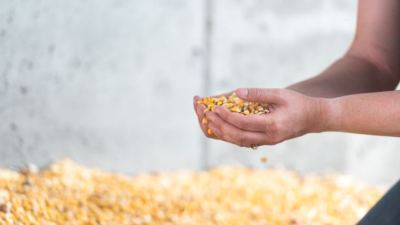The importance of modern aquaculture for food security

Modern aquaculture is changing and adapting rapidly. The sector is in its infancy compared to other areas of agriculture; however, this provides the opportunity to adjust quickly when necessary. Climate change is forcing the global food industry to find ways to be more sustainable, and the aquaculture industry has spent many years campaigning for change to ensure longevity and sustainability for future generations.
It is necessary to look outside of our comfort zone to ensure that we are protecting our oceans and the aquatic species that live in them. At the same time, we must also provide food security for over 3 billion people who rely on seafood for their diet and employment and support its role in ending hunger and addressing malnutrition.
1. Protecting our oceans

In 2016, the National Academy of Science, USA, predicted 50% of stocks could be sustainable by 2050. The last decade has seen considerable developments in fishery management limits, species quotas and reduced bycatch through advances in fishing gear and technological equipment. NGOs such as the Marine Stewardship Council have worked tirelessly to improve this situation, and globally, there is amazing conservation work taking place to ensure that aquaculture and fisheries are becoming more sustainable.
Aquaculture is becoming more resource-efficient in terms of aquafeed, energy and water management. Indoor and land-based technologies are reducing water usage and gas emissions. By 2030, 62% of food fish will come from aquaculture (FAO). Sustainable aquaculture is part of the solution and will be the key to providing future generations access to healthy and sustainable protein options and employment opportunities.
This is the part where each of us, as individuals, plays a role in protecting our oceans. We have a responsibility, we all play a part in climate change and we need to work together if we are to influence current practices.
What can we do to support this?
- We can support companies, stores and restaurants that use sustainably sourced fish and seafood.
- We can research our choices to ensure we are choosing the most sustainable option to reduce environmental impact.
2. Fish in fish out (FIFO)

Modern aquaculture has seen a significant shift in the last decade in terms of nutrition. Marine ingredients in aquafeed still exist, but some aquafeeds are made free of any marine resources while still maintaining the health benefits associated with omega 3 fatty acids and oils. The evolution of nutrition has allowed for the FIFO ratio to decrease significantly. The global FIFO factor for our industry is 0.27, which means we need 270 grams of wild-caught fish to produce 1 kilogram of farmed fish. This is calculated by dividing the fish caught for aquaculture feed production use by the farmed fish fed with these feeds. Looking at Alltech Coppens, the 2020 FIFO ratio was 0.10%, and 100% of the fishmeal sourced was from trimmings and/or certified.
3. Food security

The 2021 FAO cites the importance of seafood for ending hunger and addressing malnutrition, and fish remains critical for food and nutritional security in so many geographies across the world. To cut out eating fish entirely would wipe out some rural communities who rely on fishing for their livelihood and primary protein source.
Sustainable fishing must be implemented and promoted; fish stocks can recover and replenish when carefully managed for the long term. One of the greatest challenges we face in agriculture is to produce enough food for the increasing population while ensuring a plentiful and sustainable environment for future generations. Our population is growing exponentially, and we cannot continue to produce proteins in an unsustainable manner. This is not a new learning; both the agriculture and aquaculture industries have recognized this, and significant innovations and developments have been made over the past decade. Years of research have been invested in ensuring minimal impact on surrounding environments. Sustainable aquaculture is part of the solution, not the problem, with 62% of food fish coming from aquaculture by 2030 (FAO). This will be the key to providing future generations access to healthy and sustainable protein options and employment opportunities.
As an industry, we have been campaigning and will continue to campaign for change for many years on some of the industry’s most important challenges. It is now up to each of us to educate ourselves and our communities to make the most sustainable food choices. We must take part for the change to have an impact.














